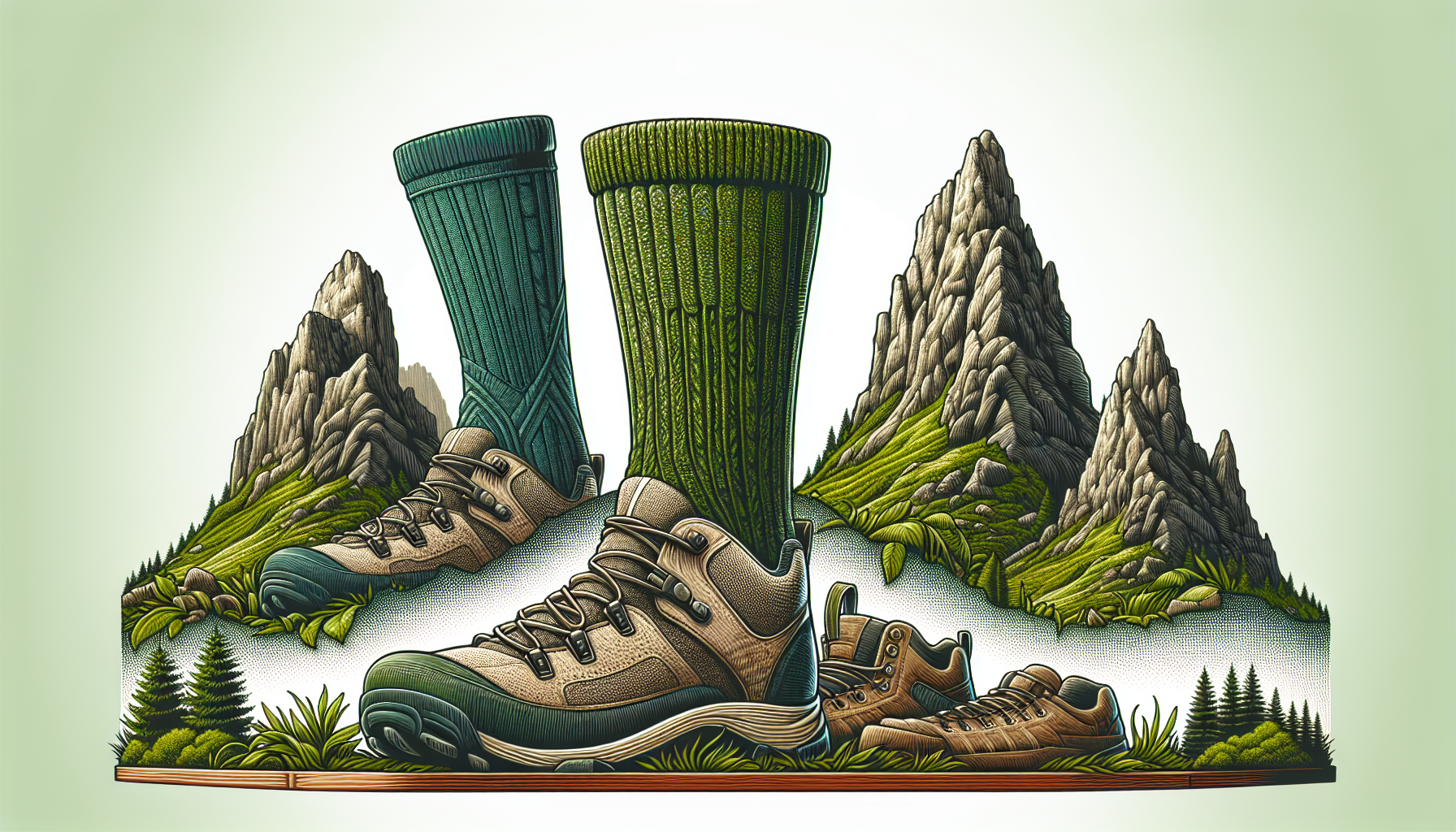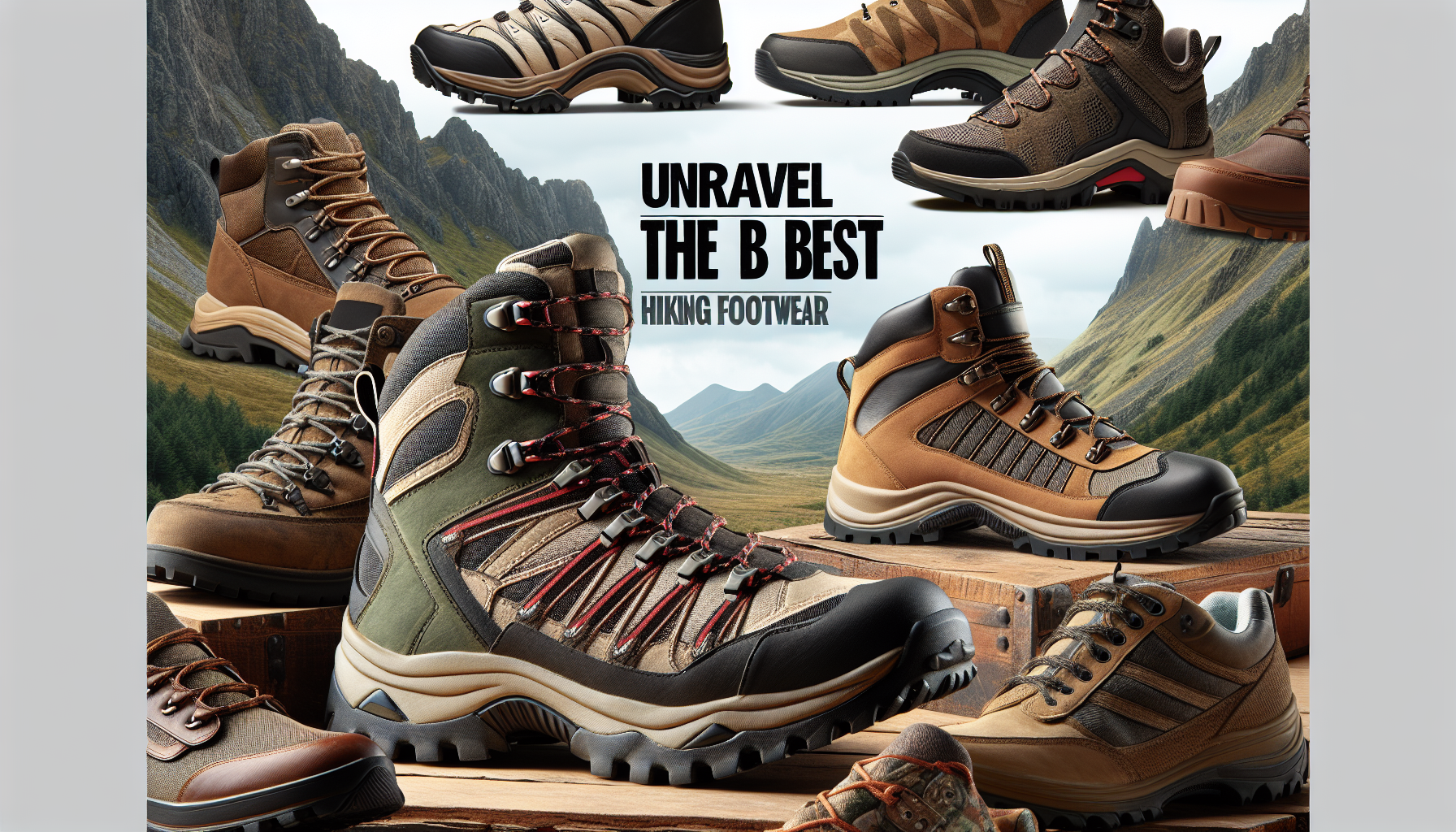The Ultimate Guide to Hiking Socks: Everything You Need to Know
When it comes to outdoor activities like hiking, having the right gear is essential for a successful and enjoyable experience. One often overlooked yet crucial piece of equipment is hiking socks. While they may seem like a simple accessory, the right pair of socks can make all the difference in terms of comfort, performance, and overall enjoyment of your hike. In this comprehensive guide, we will delve into the world of hiking socks, exploring their types, materials, benefits, and how to choose the best pair for your next adventure.
The Importance of Hiking Socks
Many hikers focus on investing in high-quality boots, backpacks, and other gear, but overlook the importance of selecting the right socks for their outdoor excursions. Hiking socks play a vital role in keeping your feet comfortable, dry, and blister-free during long treks. They provide cushioning, support, and moisture-wicking properties that help prevent common foot issues such as blisters, hot spots, and odors.
Furthermore, wearing the wrong type of socks can lead to discomfort, pain, and even injuries while hiking. Ill-fitting or inadequate socks can cause friction, rubbing, and chafing, leading to blisters and sore spots on your feet. By choosing the right pair of hiking socks, you can significantly enhance your hiking experience and ensure that your feet remain happy and healthy throughout your journey.
Types of Hiking Socks
There are several types of hiking socks available on the market, each designed for specific purposes and preferences. Understanding the different types can help you choose the best option for your needs:
1. Liner Socks
Liner socks are thin, lightweight socks that are worn underneath your regular hiking socks. They are designed to wick moisture away from your skin, reduce friction, and provide an additional layer of protection against blisters. Liner socks can be especially beneficial for long hikes or in hot weather conditions where perspiration is a concern.
2. Midweight Hiking Socks
Midweight hiking socks are the most common type of hiking socks and are suitable for a wide range of hiking conditions. They offer moderate cushioning, support, and moisture-wicking properties, making them versatile for various terrain and weather conditions. Midweight socks are a popular choice among hikers for their balance of comfort and performance.
3. Lightweight Hiking Socks
Lightweight hiking socks are thinner and less bulky than midweight socks, making them ideal for hiking in warm weather or for those who prefer a minimalist feel. They provide less cushioning but still offer moisture-wicking and support features to keep your feet comfortable and dry during your hikes.
4. Heavyweight Hiking Socks
Heavyweight hiking socks are designed for cold weather conditions or for hikers who require extra cushioning and warmth. These socks are thicker and more insulated than midweight or lightweight socks, providing added protection against the cold and harsh elements. Heavyweight socks are ideal for winter hiking, snowshoeing, or mountaineering adventures.
Materials Used in Hiking Socks
The materials used in hiking socks play a significant role in their performance, durability, and comfort. Different fabrics offer varying levels of moisture-wicking, insulation, breathability, and odor control. Here are some common materials used in hiking socks:
1. Merino Wool
Merino wool is a popular choice for hiking socks due to its natural moisture-wicking and temperature-regulating properties. Merino wool socks are soft, breathable, and odor-resistant, making them ideal for long hikes and high-intensity activities. Additionally, merino wool is known for its comfort and durability, making it a favorite among outdoor enthusiasts.
2. Synthetic Fabrics
Synthetic fabrics such as polyester, nylon, and spandex are commonly used in hiking socks for their durability, stretch, and moisture-wicking capabilities. These materials are quick-drying, lightweight, and offer good breathability, making them suitable for various hiking conditions. Synthetic socks are often more affordable than natural fibers and can provide excellent performance for outdoor activities.
3. Blended Materials
Many hiking socks are made from a blend of materials, combining the benefits of different fabrics to enhance performance and comfort. Blended socks may contain a mix of merino wool, synthetic fibers, and other materials to create a versatile and high-performing sock that meets the needs of hikers in various environments. Blended socks offer the best of both worlds, combining the natural properties of wool with the durability of synthetics.
Choosing the Right Hiking Socks
When selecting hiking socks, there are several factors to consider to ensure you choose the best pair for your needs:
1. Activity Level
Consider the intensity and duration of your hikes when choosing hiking socks. For more strenuous activities or long-distance treks, opt for socks with more cushioning and support to protect your feet during extended periods of walking. Lightweight socks may be suitable for shorter hikes or warmer weather conditions where breathability is a priority.
2. Terrain and Weather
Take into account the terrain and weather conditions of your hiking destination. For rocky, uneven terrain, you may need socks with extra padding and protection to prevent injuries or discomfort. In cold or wet conditions, choose socks that offer insulation and moisture-wicking properties to keep your feet warm and dry.
3. Fit and Comfort
Ensure your hiking socks fit properly and offer enough support without being too tight or restrictive. Look for socks with a snug but comfortable fit that prevents slipping or bunching while allowing for airflow and breathability. Test the socks with your hiking boots to ensure they work well together and provide the right level of cushioning and protection.
4. Durability and Quality
Invest in high-quality hiking socks that are durable, long-lasting, and can withstand the rigors of outdoor adventures. Look for socks with reinforced heels and toes, seamless construction, and moisture-wicking capabilities to ensure they hold up well over time. Quality socks may cost more upfront but will ultimately save you money in the long run by lasting through multiple hikes.
Expert Opinions
We reached out to several hiking experts and enthusiasts to get their insights on the importance of hiking socks and how to choose the best pair for your adventures. Here’s what they had to say:
“Hiking socks are often an overlooked piece of gear, but they can make a huge difference in your comfort and performance on the trail. Investing in high-quality socks that fit well and offer the right level of cushioning and support can prevent blisters, hot spots, and other foot issues that can ruin your hike.” – Sarah, avid hiker and outdoor enthusiast
“I always recommend wearing a moisture-wicking liner sock underneath your hiking socks to keep your feet dry and reduce friction. Liner socks can be a game-changer, especially on long hikes or in hot weather, where sweat can lead to discomfort and blisters.” – John, experienced backpacker and trail guide
Conclusion
In conclusion, hiking socks are a crucial component of your hiking gear that should not be overlooked. Choosing the right pair of socks can greatly enhance your comfort, performance, and overall enjoyment of your outdoor adventures. By understanding the different types of hiking socks, materials used, and factors to consider when selecting them, you can ensure that your feet stay happy and healthy on the trail.
Whether you opt for merino wool, synthetic, or blended hiking socks, prioritize fit, comfort, and durability to find the perfect pair for your needs. Investing in high-quality hiking socks is an investment in your hiking experience, so choose wisely and enjoy your time in the great outdoors!




